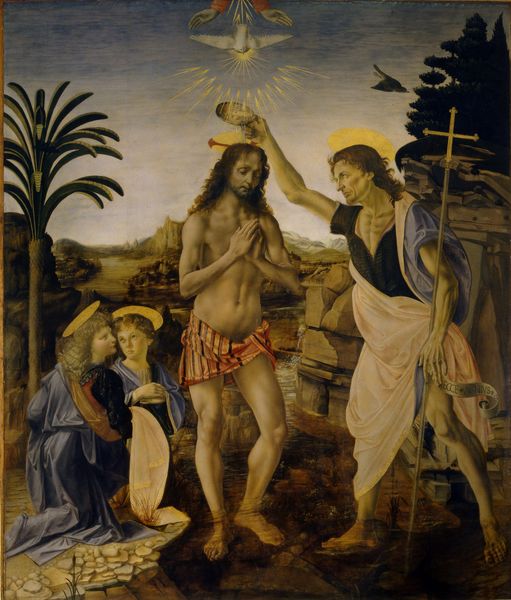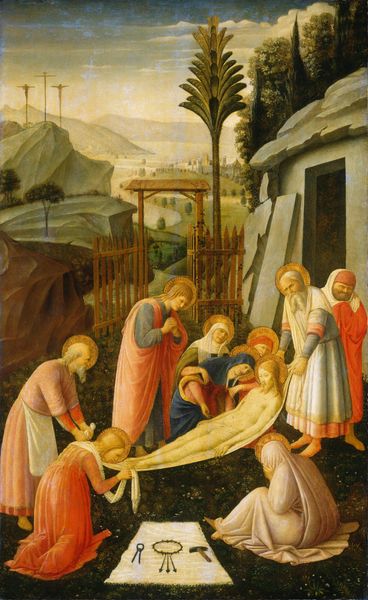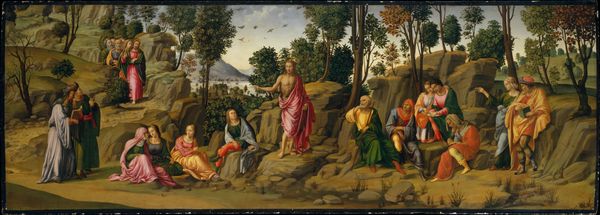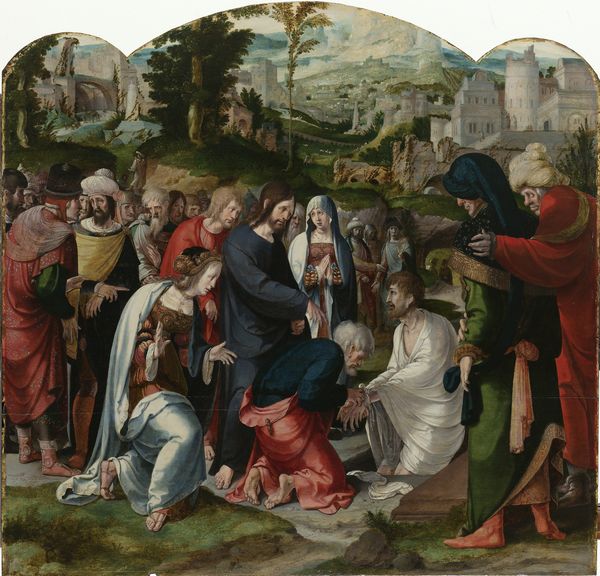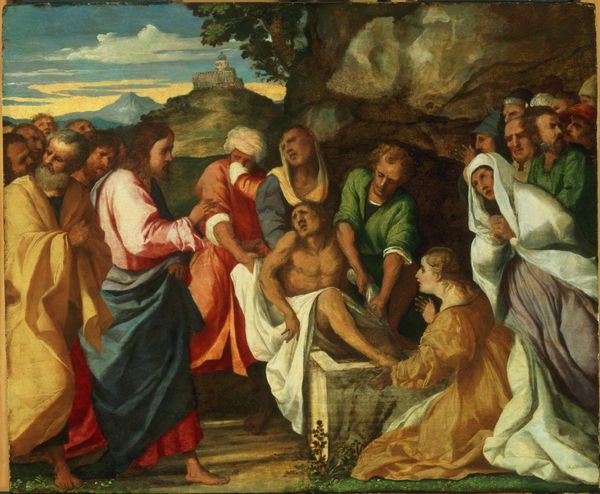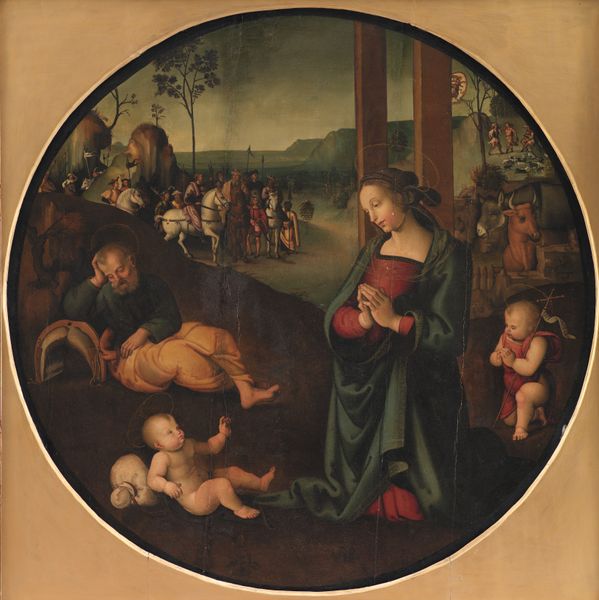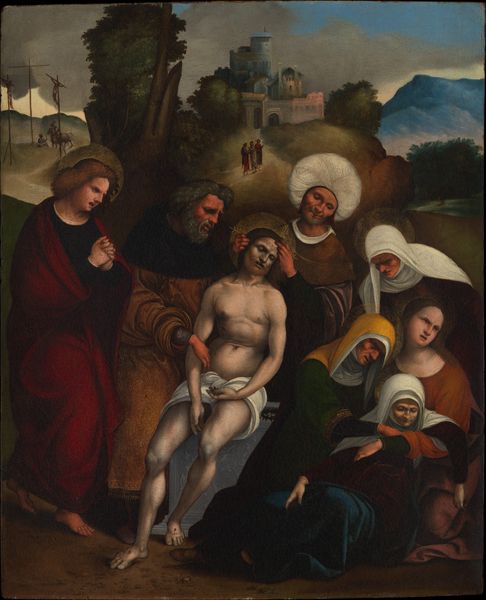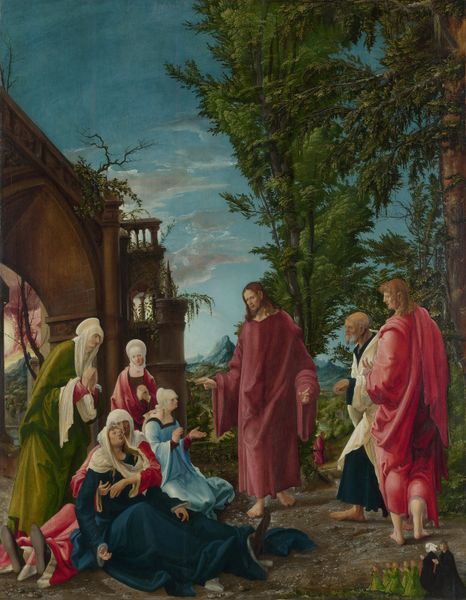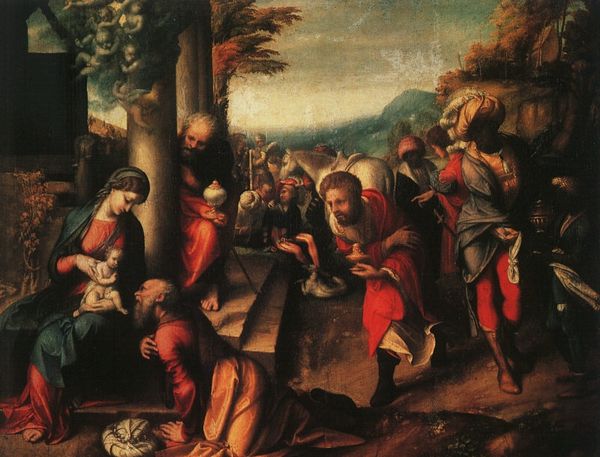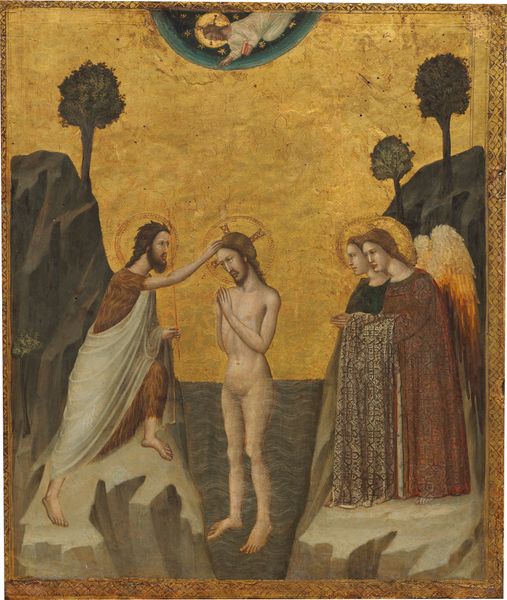
painting, oil-paint
#
painting
#
oil-paint
#
landscape
#
figuration
#
oil painting
#
history-painting
#
italian-renaissance
Dimensions: height 69 cm, width 62.5 cm, depth 6.5 cm
Copyright: Rijks Museum: Open Domain
Editor: We’re looking at Bernardino Zaganelli’s "Lamentation of Christ," an oil painting that likely dates from around 1470 to 1520. I'm struck by the sense of profound sorrow, but also this incredibly detailed landscape behind the figures. It almost feels like the world itself is weeping. What strikes you most when you look at it? Curator: The thing that grabs me first, I suppose, is the inherent *stillness*, ironically. In a scene of such dramatic loss and pain, there’s this meditative quality, this… quietude. Look how each figure is self-contained, almost lost in their own silent grief, like individual notes in a mournful song. And that distant town...it just goes on, doesn’t it? Unfazed. Do you notice anything odd about how the artist handled the space around Christ's body? Editor: I see what you mean, about the figures' individual grief, a quiet stillness. The space around Christ… it does feel a bit compressed, almost like there's not enough room for everyone in the foreground. It's a bit unsettling. Why do you point that out? Curator: Well, it forces a kind of intimacy, doesn’t it? It denies us, the viewer, a comfortable distance. We're almost *forced* to participate in this very private moment. Think of that juxtaposition of immediate loss against that expansive, indifferent landscape. Makes you think, doesn’t it, about the sheer scope of suffering and the resilience, or perhaps, stubborn indifference, of the world around it. What do you make of that? Editor: That’s a powerful way to look at it. I hadn’t considered that spatial compression as a tool to implicate the viewer. It reframes my whole understanding of the piece! Thanks. Curator: Exactly! Sometimes the flaws or oddities are the little cracks that let the light in. It becomes far more than just a historical painting. We bring our *own* experiences with grief and acceptance to the artwork and it gives us something in return, right? Editor: Absolutely. I'll definitely look at art differently after this!
Comments
No comments
Be the first to comment and join the conversation on the ultimate creative platform.
